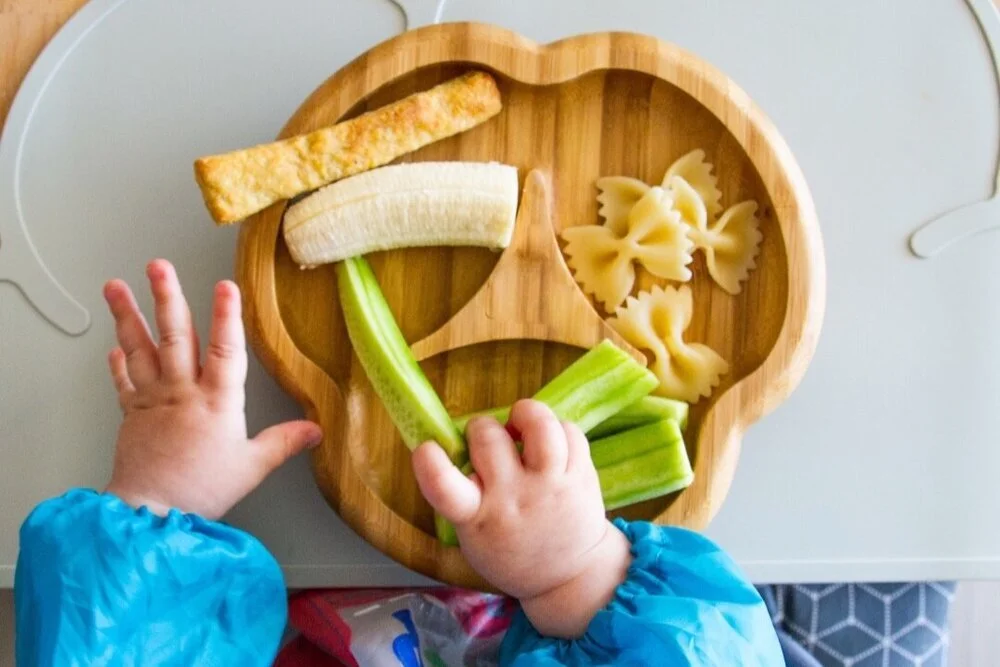How to start weaning?
Starting solid foods is an exciting time. It is a new phase in your baby’s development one that you understandably want to embrace, but how do you do it? What are the practical steps you need to take?
Why is my breastfeeding baby refusing a bottle?
Bottle refusal in breastfed babies is a common phenomenon and for those families who choose for a bottle to feature as part of their breastfeeding journey it can be highly frustrating to be met with a baby who won’t take the bottle.
Is my baby eating too much solid foods?
Worrying about babies not eating enough is common but so is worrying that your baby may be eating too much? It can be surprising how much some babies can eat in one sitting. Can a baby eat too much? In theory, yes, a baby can eat more food than they need are there are certain factors that may make this more likely.
When to wean your baby?
Starting solid foods can be an exciting yet daunting time for a parent. There is so much information available about weaning but much of it is conflicting, making it hard to figure out the best way to go about it.
Supplemental Nursing System
Colostrum Harvesting or Antenatal Hand Expressing is collecting your colostrum before your baby arrives.
Colostrum is the first milk your body makes for your baby, it’s packed full of calories, antibodies & growth factors.
Antenatal Colostrum Harvesting
Colostrum Harvesting or Antenatal Hand Expressing is collecting your colostrum before your baby arrives.
Colostrum is the first milk your body makes for your baby, it’s packed full of calories, antibodies & growth factors.
Feeding in slings/carriers
Carrying or babywearing is typically used to describe the act of supporting your child on your body using fabric or other means giving you your hands back. Although sometimes you may support them with your hands as well so that is usually called in arms carrying. Essentially carrying is a tool and it is something that can be useful for everyone.
Breastfeeding and teeth
The effect of teeth on the breastfeeding relationship will very likely vary from day to day. I speak from experience when I say this. I had no awareness of my first erupting teeth and it had no impact on our breastfeeding, however with my second I was very aware, it affected his latch at times and he was prone to biting when teething.
Portion sizes for Weaning
When it comes to knowing how much to food to prepare for your weaning infant, or how much they ‘should’ be eating, many of us are lost. We scour the internet for guidance on portion sizes but can’t find the information. This is because there are no agreed portion sizes for infants.
So what influences how much a weaning baby may eat?
Breastfeeding with large breasts
It’s often assumed that women with larger breasts will produce more milk and that having large breasts is therefore an advantage when you’re breastfeeding. In fact, there’s no correlation between the size of a woman’s breasts and her milk production. Women with larger breasts have more fatty tissue, not more glandular tissue, and the latter is where milk is produced.
Introducing fluids when weaning
A variety of questions come up, when parents are first thinking about starting solid foods with their infants. Lucy has written a very helpful frequently asked questions style blog to address all the things you need know!
Help! My breastfed baby won’t take a bottle
Breast fed babies do not need to learn to bottle feed. However there may be circumstances where for personal reasons they may prefer their infant to take a bottle here and there. And this blog is for families who have made that choice but who are struggling to get their baby to accept a bottle.
Feeding Trauma
I support families of children who have feeding difficulties, I also support many parents, usually mothers, who feel low and isolated and who tell me they feel they feel helpless or that they are failing. It is important to me to always talk to families about how they are feeling and the journey they have been are on as I strongly believe that families can be traumatised by challenging early feeding experiences and that part of my role is to listen and help.
Helping an overactive gag reflex
Gagging is a reflex that is present from birth and remains with us for our whole lives. It’s purpose is to protect our airways and stop foreign objects and foods from ‘going down the wrong way’ and reduces the risk of us choking.
In babies the gag reflex is further forward in the mouth than it is in adults. By the age of 4-6 months your baby will begin to have some more control of this reflex, which coincides with being ready for weaning at around 6 months.
Progressing through textures when weaning.
For many families, moving on from pureed solids can seem like a daunting task, when thinking about what textures to introduce, how to know if your baby is managing and what to do if they gag or choke as you progress through solid foods. This article will help you progress through textures and gives hints and tips to help if you get stuck on pureed foods.
Food safety during weaning
Beginning the weaning journey with your little one is such an exciting time for so many reasons, but there is so much to prepare for! Between deciding when your baby is ready, choosing a highchair, first foods, baby led weaning or purees and so much more, it’s important not to forget that above all, any food you serve needs to be safe!
Feeding with Down's syndrome
I met Sam during my time studying for my IBCLC lactation consultant qualification. Sam was pregnant at the time. She gave birth to her gorgeous daughter Roisin in 2019. Roisin has Down syndrome. In order to raise awareness of Down's syndrome on World Down syndrome day 2020, Sam is sharing her feeding journey.
Feeding infants with gastro-oesophageal reflux
If you are struggling to feed your baby who you think may have reflux then this article is for you.
Gastro-oesophageal reflux (GOR) is a normal process where the contents of the stomach can come back up out of the stomach into the oesophagus and mouth. This affects babies, children and adults. In babies this can look like the effortless positing and regurgitation of feeds. In some cases, the symptoms are much more severe and may need treatment of some kind. This is known as Gastro-oesophageal reflux disease (GORD).
Feeding difficulties and Cow's Milk Allergy
ow's milk allergy (CMA) is the leading cause of food allergy in children under 3 years of age. It is thought to peak in the first year of life, with true CMA affecting 2-3% of the infant population.
CMA can be IgE or Non-IgE mediated or a mixture of both. IgE mediated allergy will present as an immediate reaction to the milk protein and your child may develop hives or breathing difficulties




















